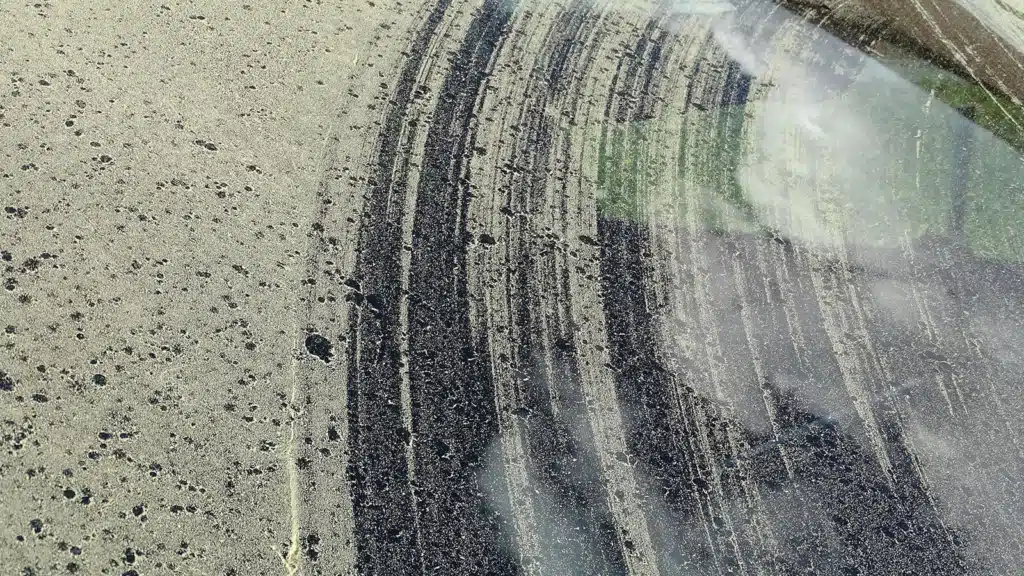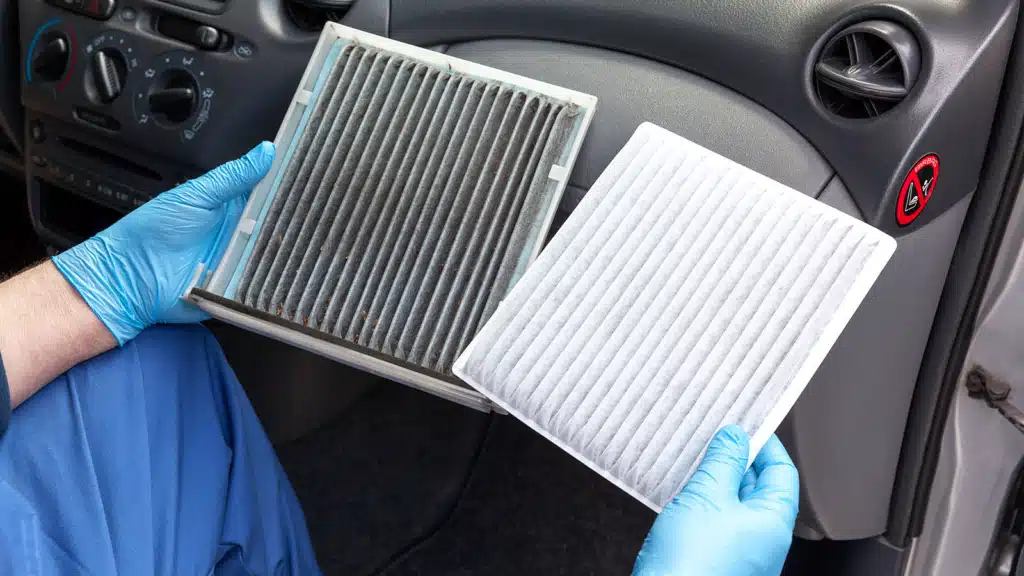 go back
go back
 go back
go back
You’ve seen it before
The clouds of yellow dust falling from the trees every spring, and settling into a deep powder on every surface in sight.
With tree pollen counts soaring from as early as the end of February through April, it would be reasonable to believe that the blanket of yellow particles is the primary culprit behind the onset of seasonal allergies. Spoiler alert: it’s not true
So what is the thick layer of yellow pollen? Where does it come from? How does it differ from other tree pollens, and why is there one type of yellow pollen that you DO need to know about.
What causes yellow pollen?
Yellow pollen is caused by the release of spores from coniferous trees. The common types of conifers that are found in North America are pine trees, including spruce, fir trees, larch and hemlock.
Although the specific type of conifer varies by region, coniferous forests are found throughout the United States.

How does yellow pollen differ from other pollen?
While tree pollen is one of the three most common causes of seasonal allergies according to the Asthma and Allergy Foundation of America (AAFA), not all pollen is created equal. In fact, the yellow pollen that you see is not likely what is causing your seasonal allergy symptoms.
The reason why yellow pollen is not commonly a seasonal allergy culprit is because yellow pollen is much heavier than other tree pollens.
This means that when conifer trees release their spores, the pollen primarily falls straight to the ground (or on anything in the area as anyone who has made the mistake of parking under a pine tree in the spring can tell you!).
Also, pine pollen is much larger than other tree pollen so that it cannot get up into the nasal passages as easily as smaller pollens.
Finally, pine pollen has a waxy coat on it which prevents the protein inside of the pollen from leading to allergic reactions.
That being said, even though pine tree pollen is not often responsible for seasonal allergy symptoms, if you have come into contact with the yellow dust, do your best not to touch your face, particularly your eyes, as that can cause itchiness and irritation.
Cedar fever and how it’s related to yellow pollen and pine trees
While coniferous trees such as pine (evergreen), spruce, and fir produce the thick, heavy, yellow pollen that primarily falls to the ground, there are species of coniferous trees that contribute to seasonal allergy symptoms. One of the worst offenders is cedar trees.
Like their coniferous cousins, cedar trees release yellow, dust-like spores into the air. The difference is that the pollen of the cedar tree is much smaller and finer, allowing for the grains to be picked up and carried by the wind. It is that same wind that then blows the pollen into people’s eyes, nose, and lungs, thereby causing seasonal allergy symptoms.
One type of Cedar tree, Mountain Cedar, is also different in the timing of when it releases its pollen. While most trees typically release their pollen in the early spring, Mountain cedar pollen is prevalent from December to February. Mountain Cedar is common in central Texas.
Those who experience allergy symptoms stemming from cedar pollen are commonly said to have “cedar fever”. In the Southeast, the Eastern Red Cedar causes typical hay fever symptoms in the early spring. Symptoms of “cedar fever” include:
- Blocked nasal passages
- Itchy, watery eyes
- Clear mucus
- Itchy sensation all over
- Sneezing
- Fever
- Aches and pains
- Fatigue
- Loss of smell
- Sore throat
- Runny nose

When is yellow pollen most prevalent?
Tree pollen is most common in the spring and yellow pollen from pine trees is no exception. Although spores can begin appearing as early as January in more southern, warmer climates, yellow pollen is typically seen from March and lasting through April.
Two other weather-related factors play a role in the pollen count and how it impacts those suffering from allergies – rain and wind.
Rain: The Asthma and Allergy Foundation of America (AAFA) notes that while rain washes pollen away, pollen counts can increase exponentially after rainfall when the water evaporates and leaves the smaller particles of pollen still in the air.
Wind: Per the ACAAI, on days with no wind, allergens are not able to become airborne. It’s no surprise then, that on windy days, pollen counts surge.
Tips for managing yellow pollen
While thick, yellow pine tree pollen may not be the primary cause of your allergy systems, it can still be annoying to deal with.
AllerVie specialist Robert Cartwright, MD recommends these tips and best practices for managing yellow pollen:
- Keep windows and doors shut as often as possible, and run an air purifier
- Replace and/or clean the filter on your air-conditioner. A HEPA filter will trap more pollen
- Wipe your feet before coming indoors so as not to track pollen into your home
- Avoid hanging clothes outside to dry
- Wipe down surfaces in the home and vacuum carpets and/or rugs daily
- Wash pets that spend time outdoors
- Wax your car. It helps the pollen dust slide off rather than accumulate
- Take a shower, wash your hair, and change your clothes after spending time outdoors
- Wear glasses or sunglasses outdoors to help keep pollen out of your eyes

Medically Reviewed By: Robert Cartwright, MD
Reviewed on: Feb. 16, 2023
Our team of writers, editors, and medical experts goes over each article carefully to make sure the information is correct and that only reliable sources are used.
We regularly check to see if the info in this article matches up with the latest scientific research and expert advice so that we can give you the most up-to-date information. See list of trusted resources here.
Get Help Managing Your Allergies
Work with one of our allergy specialist to develop a unique treatment plan for pollen and other allergens you may have.
Make an Appointment